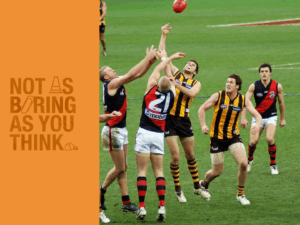Since its release 40 years ago, Tetris has become one of the most prevailing video games ever.
Recently, science has revealed some perplexing elements of this cultural phenomenon.
The combination of total focus, scintillating 8-bit music and intense pattern recognition has led to consequences its inventors never predicted.
Tetris, miraculously, can seep into the real world for some players.
THE TETRIS EFFECT
Hardcore Tetris players often report visual and auditory distortions occurring outside of the game – what’s known as the Tetris effect.
This manifests as a hyperfixation with geometric patterns or how inanimate objects might better connect.
Dr Angelica B Ortiz de Gortari is a research psychologist who spent decades studying game transfer phenomena (GTP), a term she coined in 2011.
It’s a surprisingly common occurrence that can result from any type of gaming, not just Tetris.
GTP AND ME
Angelica became aware of GTP while interviewing 42 gamers for her PhD. That’s where she happened across the case of a football player who reported strange distortions on the field.
“He started seeing health bars above the heads of the opposition players,” she says.
“Another player heard voiceovers while dodging tackles or chasing opponents.”
At home, he was playing excessive amounts of World of Warcraft. Although this isn’t always the case. “It depends on the game and individual susceptibility,” Angelica says.
“There is this transfer between the real world and the video game … but also in many cases a trigger from something associated with the game in the environment.”
Angelica’s research has since revealed that up to 96.6% of hardcore gamers report some variety of GTP. This has been verified by many subsequent studies, some of which have included more than a thousand participants.
Caption: Augmented reality games like Pokémon Go can easily inspire GTP and will continue to long into the future.
Credit: Bengt Oberger, CC BY-SA 4.0/Wikimedia Commons
ARE WE STILL IN THE GAME?
Angelica says despite some negative consequences – like sleep interrupted by game-related thoughts, images or sounds – GTP is not a disorder.
Many people report the experience as pleasurable and actively lean into the intersection between the real and virtual worlds.
Due to the diverse variety of video games, it’s hard to pin down a direct set of descriptors to identify with GTP.
“There are outright manifestations, music being heard outside of the game,” says Angelica.
“We also have the bodily sensations that involve tactile faculties, such as the controller.”
The technically defined terms are altered sensory perceptions such as visual, auditory or bodily perceptions, including automated mental processes and behaviours.
People who experience these effects may worry it’s evidence of underlying mental health conditions, but that’s not necessarily true.
Caption: A simple puzzle game, Tetris has stood the test of time
Credit: Cezary Tomczak, Maxime Lorant, CC BY-SA 4.0/Wikimedia Commons
Although people with certain disorders are more likely to experience intense GTP, the prevalence of GTP is detached from the rates of these disorders.
It’s correlation, not causation.
“We do see that those with previous diagnoses are more susceptible to experience game transfer phenomena, and those tend to have it more intensely,” says Angelica.
GTP is more common in people with gaming disorder and has recently emerged as a predictor for the condition.
When people try to quit gaming, sometimes they find the virtual world can follow them everywhere.
“We have a case of a gamer that was under therapy for video game misuse. He started compulsively taking showers,” says Angelica.
“He started to crave the showers because he wanted to induce the music from the game.”
For some reason, the shower triggered his experience of the game’s music in real life.
POST-TETRIS STRESS DISORDER?
While some video games can have negative effects, others – like Tetris – can prevent events from the past intruding upon the present.
A 2017 study found that playing Tetris can function as a treatment for post-traumatic stress disorder (PTSD).
Intrusive trauma memories, or flashbacks, are some of the worst symptoms of PTSD. Once someone has witnessed something painful and horrific, it can be almost impossible to unsee.
Another study found that playing Tetris in the 6-hour window directly after the traumatic event can reduce the recurrence of flashbacks.
These results suggest playing a fast-paced game like Tetris can occupy the memory-forming section of a brain so traumatic memories cannot coagulate.
Caption: Does this mean Game Boys should be handed out in emergency rooms?
Credit: William Warby from London, England, CC BY 2.0/Wikimedia Commons
Some have even labelled Tetris a cognitive vaccine for PTSD.
While not all aspects of these studies have replicated, it’s hard to deny playing Tetris has an impact on PTSD in the short-term.
BLURRED LINES
There are more worrying aspects of the ceaselessly blurring lines between the real and virtual worlds.
While GTP seems to undermine the idea that violent video games do not lead to violent behaviours, the jury is very much still out on that complex issue.
Angelica says, “My research indicates that even seemingly harmless actions such as jumping from a height can pose a risk for some people if they become dissociated and act on impulse.”
She says it’s extremely important for game developers to consider the implications of GTP in their work, giving the example of a theoretical game wherein green lights mean stop and red lights mean go.
It would only take one avid player to hallucinate for a split second at a set of traffic lights to potentially cause a serious or deadly accident.









